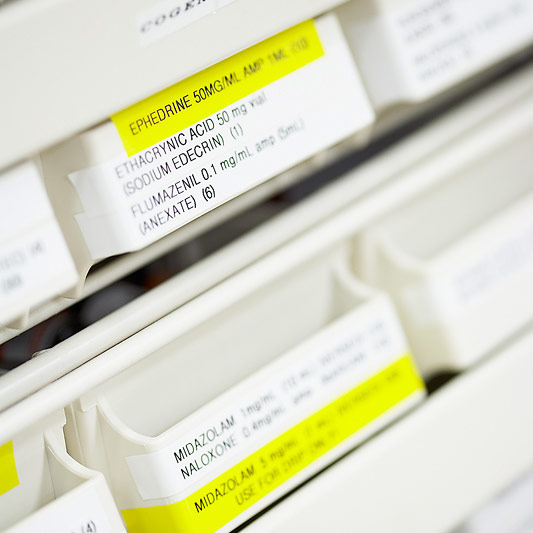
WEDNESDAY, Sept. 21 (HealthDay News) — Since the 2006 introduction of routine inoculation against rotavirus — a leading cause of diarrhea in infants and young children — almost 65,000 fewer American children have been hospitalized and about $278 million in healthcare costs have been saved, according to new research.
The vaccine targets rotavirus, a common and easily transmitted pathogen. The new study, from a team at the U.S. Centers for Disease Control and Prevention (CDC), found that there were 89 percent fewer rotavirus-specific hospitalizations in children who had gotten the vaccine compared to unvaccinated children.
“Diarrhea causes by rotavirus is one of the most common illnesses in children. It’s usually self-limited and treated at home, but before the vaccine was introduced, the virus was responsible for about 200,000 emergency room visits and 400,000 physician office visits a year,” noted the study’s senior author, Dr. Umesh Parashar, a medical epidemiologist and team leader of the viral gastroenteritis team at the CDC in Atlanta.
Before routine rotavirus inoculations in 2006, the virus was associated with 20 to 60 deaths a year in children under 5 in the United States — although that figure was much higher in developing countries. “In the U.S., with good access to healthcare, we can prevent the worse outcomes from diarrheal illness. Globally, there are about a half a million deaths caused by this pathogen,” Parashar added.
Results of the study are published in the Sept. 22 issue of the New England Journal of Medicine.
In 1998, the first rotavirus vaccine became available. However, it was quickly withdrawn from the market when otherwise healthy babies began to develop a condition known as intussusception. This condition causes the bowel to fold into itself, much like a telescope, triggering an often life-threatening bowel obstruction. The vaccine was withdrawn from the market in 1999, when the CDC linked these cases with the administration of the vaccine. The CDC estimated that for every 10,000 doses of vaccine, about one to two cases of intussusceptions occurred.
However, rotavirus itself is a risk factor for developing intussusception, according to information from the CDC, and to infectious disease specialist, Dr. Marian Michaels, from Children’s Hospital of Pittsburgh, Penn.
Michaels said that before the current, safer versions of the rotavirus vaccine came to market, studies including tens of thousands of children were done. “This was really something people took very seriously. They wanted to make sure that we first cause no harm,” she said.
So, since 2006, two new versions of rotavirus vaccine have been introduced. The vaccine is given orally at two, four and six months of age, according to background information in the study. Parashar said the current study didn’t look at rates of intussusception, but research in Latin America and Australia has found that the incidence there was approximately one or two per 100,000 babies vaccinated.
The study estimated that if this finding applied to the United States and all infants in the country were vaccinated, there would be an additional 50 cases of intussusception and additional health care costs of about $500,000, in contrast to the tens of thousands of hospitalizations prevented and millions of dollars saved by vaccinating against rotavirus.
“The most important thing is that this vaccine decreases the risk of a child getting rotavirus, and possibly needing hospitalization because of dehydration. The benefits of this vaccine outweigh the risks,” said Michaels.
Parashar and his colleagues compared 2007-2009 data from U.S. insurance databases against similar data from 2001 through 2006, to assess trends in rotavirus hospitalizations, ER visits and physician-office visits over time.
By the end of 2008, 73 percent of children had gotten at least one dose of rotavirus vaccine, 64 percent of children between one and two years of age had at least the initial dose of the vaccine, and 8 percent of children between two and four years old had at least one dose. Parashar said the vaccine needs to be given before children are eight months old.
The researchers found that hospitalization rates for diarrhea went down as much as 33 percent after introduction of the vaccine. For rotavirus-specific hospitalizations, the rate went down as much as 75 percent, according to the study.
When the researchers compared vaccinated and unvaccinated children, they found the rate of rotavirus-specific hospitalizations were 89 percent less for vaccinated children. The number of ER visits were about 48 percent lower for vaccinated children, and physician office visits were around 12 percent lower for children who received the vaccine.
“Rotavirus is the most common cause of severe diarrheal illness. The vaccine can prevent and reduce the disease burden substantially,” said Parashar.
“This vaccine decreases the risk of a child getting rotavirus and needing hospitalization. I think this is extraordinarily exciting, and we’ve already seen the reduction in the ER,” said Michaels.
More information
Learn more about the rotavirus vaccine from the U.S. Centers for Disease Control and Prevention.

